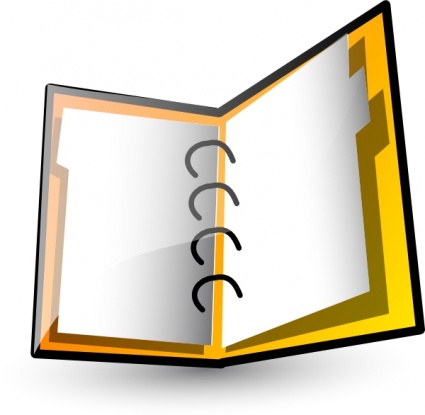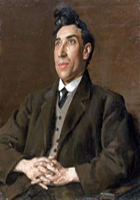Friday, September 30, 2011
Thursday, September 29, 2011
Thursday, September 22, 2011
Reading a Film and Writing a Film review
The film critic Christian Metz has written "A film is difficult to explain because it is easy to understand." We are used to sitting back in the dark and viewing a film uncritically; indeed, most Hollywood films are constructed to render “invisible” the carefully constructed nature of the medium. Further, because a film is constructed of visual, aural, and linguistic components that are manipulated in numerous ways, it is a challenge to take apart the totality of the film experience and to interpret how that experience was assembled.
Title/opening credits--Titles are chosen carefully--consider alternatives and why this title was chosen; consider ambiguities in the title .The opening credits establish a tone, and often are used to foreshadow events, themes, or metaphors--pay careful attention from the beginning.
Story/Plot/Narrative--The story consists of all of the information conveyed by the film (either directly or by inference) assembled in chronological order to communicate the overall sense of what occurred in the film. The plot is contructed as the basic building blocks of the story,conveying specific events. The narrative or narration is the process by which story information is conveyed to the
audience through all of the cinematic means listed below. While dialogue provides a good deal of information, pay attention to all the other audio and visual clues that convey information about the narrative.. In considering the narrative structure, note whether the film follows a standard chronological narrative or not and how time is used. What are the key moments and how are they established? What are the climaxes and anticlimaxes? How far ahead is the audience in understanding what is happening to the characters than the characters themselves are? What propels the story forward? What is the pace of the narrative? How do earlier parts of the narrative
set up later parts? Where are the key emotive moments when the audience is frieghtened, enraged,enraptured, feeling vindicated, etc., and how has the narrative helped to establish these feelings?
Motivation--Motivation is the justification given in the film for the presence of an element; it may appeal to the viewer's knowledge of the real world, to genre conventions, to narrative causality, or to a stylistic pattern within the film. Failure to provide proper motivation challenges the sense of "cinematic realism" in a film. (If a character's personal motivation is explained in a film as a reason for his/her action, that falls under "narrative causality." Do not confuse character motivation as revealed through narrative with your own expectations you bring to the film. Characters are not real people, and do not make choices outside of what is conveyed narratively.
Characterization--Who are the central characters? How are minor characters used? Are characters thinly or fully drawn, and why? Who in the audience is meant to relate to which characters, and what sort of emotion (fear, pleasure, anxiety) are audience members meant to feel because of this identification? Is there a clear or ambivalent hero or villain? What values do the characters represent, and do they change during the film? Are the characters meant to play a particular “type” and do they play against type at any time?
Point of view--Is the film in general told from a particular character's point of view, or is it “objective”? Is the film's perspective primarily intellectual or emotional, visionary or “realistic”? Within the film, is a particular shot viewed from a character's point of view ("subjective shot"), and how does the camera technically reinforce the point of view? Who is the audience meant to be focusing on at a particular moment?
Guide Steps for Writing Your Film Review
Contextual Analysis of the Film
Collect information on the movie plot, characterization, director, theme and locations used. Gather information about the story writing, production techniques and background information on the main theme.
Watch the Movie Twice
Before you start off with the review crafting process, you need to watch the assigned movie once or twice. While doing so, you need to make the best use of your sense of observation. Note down all minor and major details roughly on a piece of paper so that if your memory deludes you while gathering thoughts on writing, you can always refer to these keynotes (brilliant idea!).
Analyze the Movie Plot and Main Characters
Next off, spend a few hours analyzing the whole movie from beginning to the end. Sop deeply into the plot of the movie. Do not let your coloured opinions prevail here. Analysis should be done from the perspective of its category (comedy, action, romantic, historical), direction, acting, dialogues, script and quality.
Draft an Outline for Your Film Essay
Now that the pre-writing stage is realized, the real job begins—writing the film review paper. Start by giving a brief introduction of the movie. Apply the basic writing rule here; begin your write up with a catchy phrase or line. I personally recommend that you fire up with a dialogue or phrase taken from the movie which encloses its theme—this is likely to grab attention of your readers.
Get Help from Add-ons and Previous Reviews
You can make your review interesting by making use of analogies and metaphors, comparing plot of the movie to any other movie of similar category, giving dramatic explanations of best scenes or by throwing light on dimensions that add uniqueness to the movie.
Here’s a trap—mostly students read reviews written by critics on the same movie just to get an overall idea of how review writing is done; what they fail to realize is that without conscious volition, they adopt their ideas which are reflected in their paper. Consequently, the review produced is not up to the mark and affect grades.
Paragraph 1: Offer your overall impression of the film while mentioning the movie's title, director, and key actors.
Paragraph 2: Summarize the plot of the film
Paragraph 3: How did the actors portray key character roles? Did they fulfill your expectations given your knowledge of the original novel or play (if one exists)?
Paragraph 4: Were any particular film techniques used in key scenes? How did the film techniques anmd music enhance the setting and themes of the film? You may need two paragraphs to explain this information.
Paragraph 5: Address how well the film represents the novel or play. Offer evidence for your opinion. Remember to mention use of symbols and literary devices. Do they "transfer" from the novel/play into the movie well?
Paragraph 6: Ending paragraph--your last opportunity to guide the reader. Offer a clincher that tells the reader to attend the film or not.
Wednesday, September 21, 2011
Tuesday, September 20, 2011
Monday, September 19, 2011
CACTUS
K. SATCHIDANANDAN

CACTUS
Thorns are my language.
I announce my existence
with a bleeding touch.
Once these thorns were flowers.
I loathe lovers who betray.
Poets have abandoned the deserts
to go back to the gardens.
Only camels remain here, and merchants
who trample my flowers to dust.
One thorn for each rare drop of water.
I don’t tempt butterflies.
No bird sings my praise.
I don’t yield to droughts.
I create another beauty
beyond the moonlight,
this side of dreams,
a sharp, piercing,
parallel language.
I announce my existence
with a bleeding touch.
Once these thorns were flowers.
I loathe lovers who betray.
Poets have abandoned the deserts
to go back to the gardens.
Only camels remain here, and merchants
who trample my flowers to dust.
One thorn for each rare drop of water.
I don’t tempt butterflies.
No bird sings my praise.
I don’t yield to droughts.
I create another beauty
beyond the moonlight,
this side of dreams,
a sharp, piercing,
parallel language.
Sunday, September 18, 2011
In the Country by William Henry Davies
| In the Country |
| . |
This life is sweetest; in this wood I hear no children cry for food; I see no woman, white with care; No man, with muscled wasting here. No doubt it is a selfish thing To fly from human suffering; No doubt he is a selfish man, Who shuns poor creatures, sad and wan. But ''tis a wretched life to face Hunger in almost every place; Cursed with a hand that''s empty, when The heart is full to help all men. Can I admire the statue great, When living men starve at its feet! Can I admire the park''s green tree, A roof for homeless misery! William Henry Davies |
William Henry Davies
| Biography of William Henry Davies | |||
| |||
Tuesday, September 13, 2011
Friday, September 09, 2011
Wednesday, September 07, 2011
Subscribe to:
Posts (Atom)





 William Henry Davies was born in Newport, Monmouthshire, Wales. His father was, at the time a Publican. After an apprenticeship as a picture-frame maker and a series of labouring jobs, he travelled to America, first to New York and then to the Klondike.
William Henry Davies was born in Newport, Monmouthshire, Wales. His father was, at the time a Publican. After an apprenticeship as a picture-frame maker and a series of labouring jobs, he travelled to America, first to New York and then to the Klondike.